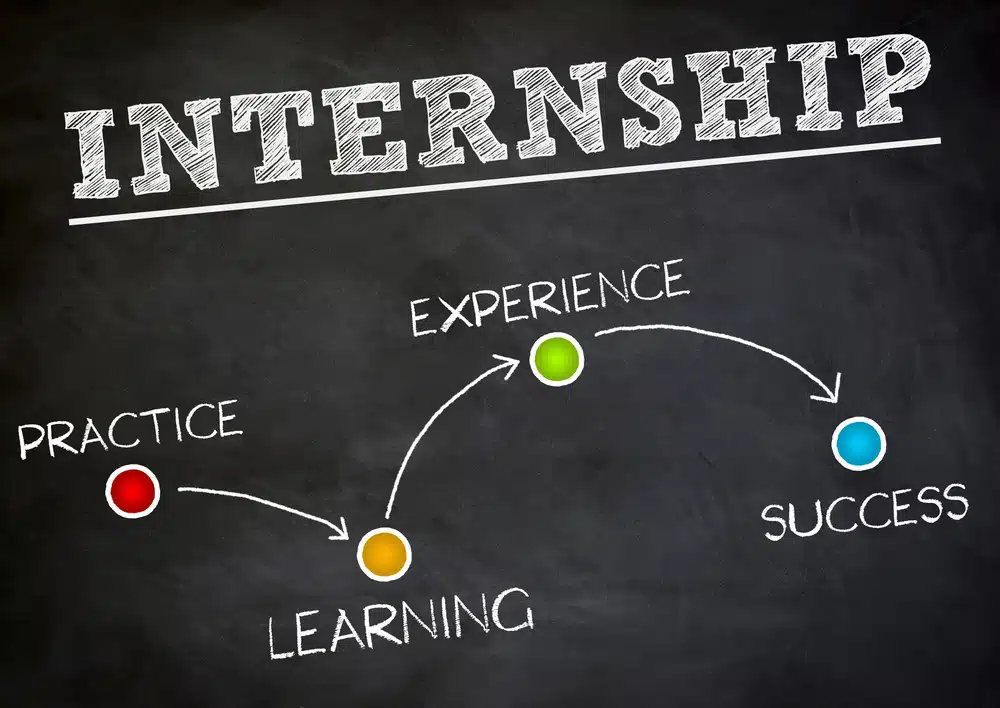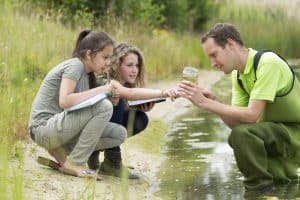15 Engineering Internships for High School Students
Engineering internships for high school students are a pivotal step towards a successful career in the STEM fields. For high school students eyeing a future in this dynamic field, engineering internships provide an invaluable glimpse into the professional world, offering hands-on experience that can shape their educational and career paths.
With the growing emphasis on STEM education and the competitive edge needed for college admissions and future job markets, securing an internship in engineering boosts a student’s resume. It equips them with practical skills and insights into the industry.
15 Engineering Internships for High School Students
High school engineering students have several internship options combining education and practical experience. These programs boost resumes and offer a real taste of professional life in aerospace, software development, and national security. Here are 15 notable internships designed for young enthusiasts eager to explore their engineering passion.
1. National Aeronautics and Space Administration (NASA)
- Location: Ft. Meade, MD; Aurora, CO; Augusta, GA; San Antonio, TX; Oahu, HI
- Internship Dates: Academic Year & Summer
- Eligibility: Junior in high school, 2.5 GPA, interest in business, engineering, or computer science
Securing an internship at NASA is highly competitive, showcasing the value these opportunities offer to young aspirants. Successful applicants get to participate in ground-breaking research alongside NASA’s esteemed professionals. This experience is more than an entry on a resume; it’s an immersive journey into aerospace, engineering, or science for ambitious high school students.
NASA’s internships are available during the fall, spring, and summer, though high school students should note that opportunities are limited to specific locations. A compelling letter of recommendation can significantly strengthen an application, strongly endorsing the candidate’s potential for this challenging role.
These internships offer hands-on involvement in projects ranging from software development for space missions to satellite data analysis, allowing students to apply academic knowledge in real-world scenarios. This practical experience is invaluable, providing insights into the field and laying a solid foundation for future career paths.
2. NSA High School Work Study
- Location: Ft. Meade, MD; Aurora, CO; Augusta, GA; San Antonio, TX; Oahu, HI
- Internship Dates: Academic Year & Summer
- Eligibility: Junior in high school, 2.5 GPA, interest in business, engineering, or computer science
The NSA High School Work Study program offers a unique opportunity for students interested in computer science, engineering, or business. This program integrates work experience with students’ academic schedules, enabling them to earn while gaining valuable national security and intelligence exposure.
The program offers financial benefits and immerses students in the complexities of national security work. Participants are introduced to advanced technology and data processing techniques, marking the start of potential careers in information technology or cybersecurity. The program offers a blend of practical experience and theoretical learning, laying a strong foundation in national security for high school students.
3. Science and Engineering Apprenticeship Program (SEAP)
- Location: Arizona, California, Connecticut, Florida, Hawaii
- Internship Dates: Summer
- Eligibility: High school students interested in research
SEAP offers a paid summer research opportunity for students to work directly in Department of Navy laboratories across states like Arizona, California, Connecticut, Florida, and Hawaii. Over eight weeks, students engage in ongoing research projects, gaining valuable technical and soft skills. This program is an excellent way for students to apply classroom knowledge to practical situations, developing problem-solving and teamwork abilities.
The mentorship aspect of SEAP pairs students with experienced professionals, providing guidance and support throughout the internship. This direct interaction with mentors allows students to learn about the day-to-day operations of a research laboratory and explore various aspects of engineering and scientific careers. By participating in SEAP, students enhance their resumes and build a solid foundation for their future in STEM.
4. Princeton Plasma Physics Laboratory
- Location: Princeton, NJ
- Internship Dates: Semester-long
- Eligibility: At least 16 years old, senior in high school
The Princeton Plasma Physics Laboratory offers a semester-long project-based internship for high school seniors interested in plasma physics. This program integrates with the student’s academic schedule, allowing the internship to count towards academic credit. Students are involved in plasma physics research, guided by expert scientists, and gain an understanding of the scientific process.
This challenging internship encourages students to think critically and solve complex problems. The mentorship from seasoned researchers is invaluable, providing students with insights into conducting experiments, analyzing data, and presenting findings. Through this program, students get a glimpse into the life of a researcher and the potential applications of plasma physics in areas like energy and space exploration.
5. Idaho National Laboratory Internship
- Location: Idaho
- Internship Dates: Summer
- Eligibility: At least 16 years old, willing to work full-time for eight weeks
Idaho National Laboratory (INL) provides a significant opportunity for students interested in key areas like nuclear energy, environmental science, and national security. Through this program, high school students can gain firsthand experience in fields crucial for addressing global challenges.
Eligibility is set for students 16 years and older, aiming to involve them in an intensive, full-time, eight-week summer program. This setup is designed to immerse students deeply into scientific research alongside expert mentors. Such an environment offers a practical understanding of academic concepts and their real-world applications.
Mentorship at INL stands out as students work closely with industry leaders. This aspect of the program ensures that participants contribute to meaningful projects and receive insights into career pathways within STEM fields. It’s a comprehensive learning journey extending beyond conventional education, fostering personal and professional growth.
Furthermore, this paid internship appreciates students’ contributions meaningfully, providing financial benefits and a sense of achievement. This acknowledgment encourages early involvement in STEM and lays a strong foundation for students’ future career paths.
6. Spark Summer Internship Program
- Location: Seattle, WA
- Internship Dates: Summer
- Eligibility: Students in the Seattle area interested in STEM
The Spark Summer Internship Program connects Seattle-area students with tech companies, focusing on software development, app creation, and web programming. This initiative is perfect for those fascinated by the digital realm and eager to apply their coding skills practically.
Participants engage directly with Spark’s business partners on actual projects, allowing them to apply coding principles in real-world scenarios. This experience enhances their technical skills and provides insights into the tech industry’s project management and teamwork dynamics.
A key advantage of the Spark program is its exposure to professional work environments. Students acquire essential communication, teamwork, and problem-solving skills vital for navigating future challenges in tech careers. This practical exposure fosters adaptability and innovation, which are essential for success in the fast-evolving tech industry.
Interning with technology leaders through Spark offers students a unique perspective on how innovations drive business and consumer trends. This experience empowers and motivates students to explore further education and career opportunities in computer science and technology. It connects them with the broader tech community, inspiring ongoing growth in STEM.
7. Ladder Internships: Building Skills and Networks
- Location: Various
- Cost: Financial aid available
- Internship Dates: 8 weeks (Startup Program), 12-16 weeks (Research Program)
- Eligibility: Self-motivated students with good communication skills
Ladder Internships connect high school students directly with startups for an engaging 8-week summer program. This initiative, created by Harvard entrepreneurs, is tailored to develop leadership, communication, and personal growth. Students work closely with startups, gaining firsthand experience in innovation and business strategy.
Ladder provides substantial financial aid, ensuring a diverse range of students can access these opportunities. This support enables students from different backgrounds to experience the startup environment.
Joining Ladder Internships allows students to enhance critical skills like problem-solving and teamwork, which are essential in any future career. The program’s mentorship and networking opportunities are valuable, offering insights and connections that can shape students’ careers.
8. AFRL Scholars Program: Encouraging STEM Exploration
- Location: Various
- Cost: Stipend provided
- Internship Dates: Summer
- Application Deadline: January 10, 2024
- Eligibility: 3.0 GPA recommended, US Citizen, at least 16 years old
The AFRL Scholars Program offers a practical research experience for students passionate about STEM. This paid internship places them alongside expert scientists and engineers on advanced technology projects. It’s an excellent opportunity for students to apply their academic knowledge professionally, encouraging a deeper interest in STEM careers.
Stipends are provided, making the internship accessible and acknowledging the valuable work of the interns. Through the AFRL Scholars Program, students gain a realistic view of research careers, acquiring skills and knowledge that will benefit them in their future studies and professional life.
9. STEM Enhancement in Earth Science (SEES) Summer High School Intern Program
- Location: University of Texas, Austin
- Cost: Housing, meals, and local transportation provided
- Internship Dates: July 7-20, 2024, for 11th graders; July 27-August 4, 2024, for 10th graders
- Application Deadline: February 24, 2024
- Eligibility: High school students interested in Earth and space research
The SEES program is a collaborative effort by NASA and The University of Texas at Austin Center for Space Research. It invites high school students to explore Earth and space sciences through a comprehensive curriculum, including distance learning and direct research experience.
Participants start with distance learning modules in Earth and Space Science and Python programming. These initial stages are critical for equipping students with the necessary knowledge and skills for future research projects. Following this online preparation, students transition to project-specific work under the guidance of mentors, focusing on NASA’s current research areas.
The program’s core is the research experience, offered on-site for 11th and 10th graders at different times during the summer. This experience allows students to apply their learned skills practically and contribute to meaningful scientific research. The program wraps up with a Virtual SEES Science Symposium, where students present their findings, demonstrating their growth and contributions to the scientific community.
Applications for the SEES program have a comprehensive selection process that evaluates students’ academic records, application essays, introduction videos, and recommendation forms. This program is specifically designed for students with a strong interest in STEM, offering them a rare opportunity to engage in professional-level research.
10. QuarkNet Summer Research Program
- Location: Fermilab
- Cost: $17.20 per hour
- Internship Dates: June 17, 2024 – August 2, 2024
- Application Deadline: January 31, 2024
- Eligibility: Sophomores, juniors, and seniors with a strong interest in science and mathematics
The QuarkNet program, in partnership with Fermilab, offers students a unique research opportunity in science and technology. This seven-week program connects students with Fermilab scientists to work on projects central to the lab’s research mission. The program emphasizes the practical application of scientific principles, allowing students to work on meaningful projects in various research areas.
QuarkNet is open to sophomores, juniors, and seniors, with a special call for juniors with programming or engineering experience. The program encourages students to fully commit to the seven weeks, understanding that full immersion is key to gaining the most from the experience. During this time, students are not just learners but active contributors to the research projects at Fermilab.
The application process for QuarkNet is detailed, requiring students to submit an online application, a questionnaire, a letter of recommendation, and responses to several essay questions. These components help the selection committee identify academically talented students and genuinely interested in science and mathematics.
11. California Academy of Sciences – Careers in Science (CiS) Intern Program
- Location: San Francisco, CA
- Internship Dates: Year-round
- Application Deadline: April 1, 2024
- Eligibility: 9th or 10th-grade students in SFUSD schools
The CiS Intern Program offers high school students from San Francisco, especially those from groups not well-represented in STEM, a unique opportunity. It’s a multi-year, paid chance to dive into science, aiming to nurture a diverse group of future scientists and researchers.
The program invites a broad spectrum of students to discover their interest in STEM, requiring no previous science experience. Students can start on this enriching journey by meeting specific academic standards and demonstrating a keen interest in science. This inclusivity ensures access to science education for all, creating an environment that values curiosity and eagerness to learn.
Activities span the school year and summer, blending theory with hands-on experience. This deepens students’ understanding of scientific concepts and arms them with skills crucial for STEM careers. Engaging in fieldwork and public activities at the academy, students gain practical experience vital for their development.
The program’s impact in promoting diversity and inclusion in science is recognized through various awards, highlighting its role in paving the way for underrepresented students in STEM. CiS plays a key role in striving toward an equitable and diverse scientific field where every student has the chance to succeed.
12. HiSTEP – High School Scientific Training and Enrichment Program
- Location: Bethesda, MD
- Cost: Stipend of $2150
- Internship Dates: 5 weeks in summer
- Application Deadline: January 12, 2024
- Eligibility: Sophomores, juniors, and seniors interested in STEM-M fields
HiSTEP introduces students from financially challenged backgrounds to biomedical and healthcare careers. This 5-week program at the NIH campus in Bethesda, MD, aims to bring students to the forefront of biomedical research and healthcare, offering a rich experience across scientific disciplines.
The comprehensive curriculum embraces scientific disciplines through workshops, lectures, and practical activities. This approach ensures students gain deep insights into biomedical research and develop a genuine interest in the field. HiSTEP breaks down barriers to access, providing financial support to enable participation for all eligible students.
HiSTEP’s focus on recruiting students from various backgrounds enhances the educational experience for all participants and moves towards a healthcare workforce that reflects society’s diversity.
Through HiSTEP, the NIH contributes to building a more inclusive and equitable scientific community, ready to tackle health challenges with a diverse and capable workforce.
13. Anson L. Clark Scholars Program at Texas Tech University
- Location: Texas Tech University
- Cost: No program fees; $750 stipend upon completion
- Internship Dates: June 16, 2024 to August 1, 2024
- Application Deadline: February 15, 2024
- Eligibility: At least 17 years old, U.S. Citizen or Permanent Resident
The Anson L. Clark Scholars Program is a distinguished seven-week summer program for high school juniors and seniors interested in research. Hosted by Texas Tech University, it offers an immersive experience in various research disciplines. The program fully supports students by providing meals, housing, and weekend activities without registration fees. However, students are responsible for their travel and personal expenses.
The application process is comprehensive, requiring essays, transcripts, test scores, and recommendations, ensuring a highly qualified and motivated group of participants.
The program offers a hands-on research experience and includes social activities and weekly seminars, enhancing the educational journey.
14. Research Science Institute (RSI) at MIT
- Location: Massachusetts Institute of Technology (MIT)
- Cost: Cost-free to students
- Internship Dates: Summer
- Application Deadline: Closed for 2024
- Eligibility: High school juniors
The Research Science Institute (RSI) at MIT is a prestigious program that combines classroom instruction in scientific theory with practical research experience. Every summer, 100 exceptional high school students are selected to participate in this intensive six-week program, engaging in the full research cycle from literature review to project presentation.
The program starts with a week of STEM classes taught by experienced educators, preparing students for the research phase. This preparation is crucial as students then move on to conduct original research under the guidance of seasoned scientists and researchers. This experience is invaluable, offering insights into the daily workings of a research career.
One of the program’s highlights is the opportunity for students to present their research findings through written and oral reports, mirroring professional scientific communication. This showcases their hard work and hones their ability to convey complex information effectively.
15. Air Force Research Laboratory (AFRL) Scholars Program
- Location: Various
- Cost: Stipend provided
- Internship Dates: Summer
- Eligibility: High school students, U.S. citizens or permanent residents
The AFRL Scholars Program offers a unique opportunity for students to engage in research and technology projects relevant to national defense and innovation. This program provides access to advanced laboratory facilities and mentorship from professionals in the field, creating a rich, hands-on learning experience.
Participants work on projects that challenge and extend their understanding of scientific principles under the guidance of experienced mentors. This mentorship is a cornerstone of the program, offering insights into the technical aspects of research and the broader implications of their work.
The program emphasizes the practical application of research, ensuring students’ work has real-world relevance. Additionally, the educational stipend offered to participants underscores the program’s commitment to accessible STEM education, supporting students financially during their internship.
How to Make the Most Out of Your Engineering Internship
To maximize your experience in engineering internships for high school students, concentrate on these key strategies:
1. Network Effectively
Build connections with professionals during your internship. These connections can guide you, offer mentorship, and might lead to future job opportunities. Attend company events and meetings to broaden your network. Forming genuine connections is important, so share your interests and learn about others’ work.
2. Seek Challenges
Engineering revolves around solving problems and innovating. Accept tasks that challenge you, demonstrating your readiness to learn and grow. Volunteering for difficult projects or requesting to join advanced research teams can enhance your skills.
3. Ask Questions
Curiosity is crucial in engineering. Inquire about the tasks you’re working on, the technology in use, and broader industry questions. This shows you’re engaged and eager to deepen your understanding. Write down questions for discussions with your mentor, and note their answers for future reference.
4. Reflect on Your Experience
Maintain a daily journal of your activities, the skills you’re acquiring, any feedback you receive, and your thoughts on these experiences. This practice helps you identify your strengths, areas for improvement, and how your internship connects to your classroom learning. Such reflection can also be valuable for college applications and future job discussions.
5. Understand the Business Aspect
Grasping the business side of engineering, such as project management and budgeting, is vital. This broader understanding helps you see how engineering solutions must be technically and economically feasible.
6. Engage in Professional Development
Participate in professional development opportunities offered during your internship. These sessions can improve skills like technical writing and project management and are also excellent for networking.
7. Be Proactive About Learning
Enhance your internship by actively seeking additional learning opportunities. This could involve tackling more projects, learning new software, or observing professionals in various departments.
Showing initiative by proposing solutions or volunteering for extra tasks demonstrates your commitment to maximizing your learning experience during your internship.
Why are Engineering Internships Important?
Engineering internships for high school students bridge the gap between theoretical education and practical application, making them vital for students aiming for a career in engineering. These internships significantly influence students’ academic paths and future career options in engineering.
Real-World Application of Classroom Knowledge
Engineering education focuses on solving problems through innovation and scientific principles. However, classroom learning often leans more toward theory.
Internships allow students to apply this theoretical knowledge to problems, enhancing their understanding and reinforcing their learning through practical application.
Gaining a Competitive Edge for College Applications
Admission to top engineering programs is highly competitive. Admission officers look for candidates with academic excellence and a genuine interest in engineering.
Engineering internships demonstrate a student’s dedication to the field, distinguishing them from other applicants with similar academic achievements.
Exposure to Professional Work Environments
Internships introduce students to the workplace, teaching them about teamwork, communication, and the culture of engineering projects. This early exposure prepares them for their careers by acquainting them with professional environments.
Foundation for Career Success
Engineering internships provide practical experience, laying the groundwork for a successful career. They equip students with skills and knowledge that enhance their resumes and give them an advantage in future job searches and overall careers.
Exploring Various Engineering Fields
Engineering encompasses numerous disciplines. Internships allow students to explore these fields before committing to a college major. This exploration ensures they choose a path aligned with their interests and strengths.
Networking and Mentorship
Internships are opportunities to connect with professionals and gain mentorship from experienced engineers. These relationships can offer career guidance, recommenders for college, and future job opportunities, supporting students as they navigate their academic and career paths in engineering.
Conclusion
Engineering internships for high school students are more than just summer jobs; they are stepping stones to future opportunities in STEM fields. By offering real-world experience, mentorship, and exposure to professional environments, these internships play a crucial role in preparing students for successful careers in engineering.
Whether you’re designing the next spacecraft at NASA, developing software with a tech startup, or conducting environmental research, an engineering internship can be the beginning of a fulfilling and impactful career.
High school students interested in engineering internships are encouraged to pursue these opportunities actively, setting the stage for a bright future in the ever-evolving world of STEM.












































